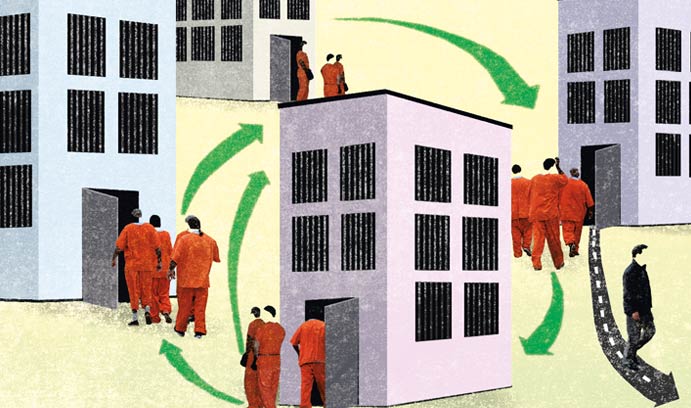A Lehigh Team Helps State Prison System Save Millions

A group of Lehigh engineers who collaborated with Pennsylvania’s Department of Corrections (PADOC) to develop a first-of-its-kind optimization model has won one of the world’s most prestigious operations research awards.
Graduate students and professors in the department of industrial and systems engineering invented the Inmate Assignment Decision Support System (IADSS), which has been credited with saving Pennsylvania millions of dollars by streamlining the assignment of inmates to the state’s 25 correctional institutions.
On Oct. 23, the group received the 2017 Daniel H. Wagner Prize for Excellence in Operations Research Practice from INFORMS (the Institute for Operations Research and the Management Sciences), the premier international professional association for analytics and operations research.
The Wagner Prize is given annually to researchers from industry or academia. It recognizes the application of “strong mathematics … to practical problems supported by clear and intelligible writing, the quality and coherence of analysis, [and] good writing, strong analytical content and verifiable practice successes.”
The development of IADSS, INFORMS said, represents “the first time that operations research methodologies have been used to optimize the operations, and built into the routine business practice, of a correctional system. It opens a rich and untouched area for the application of operations research.”
IADSS can make hundreds of inmate assignments in a few minutes, a task that requires hours when performed manually by humans. The system is the product of five years of work by Lehigh researchers.
PADOC officials say IADSS has “transformed” the inmate assignment process in Pennsylvania and can do the same for state correctional agencies across the United States. In the long run, they say, the system could shorten prison stays and reduce recidivism—the rate at which released prisoners commit new crimes—by giving inmates more timely access to the treatment programs they need to earn parole.
PADOC officials have been using IADSS for almost a year to help assign inmates and they plan to switch over to it completely early next year.
In a recent report, PADOC officials said IADSS has enabled the corrections department to achieve cost savings and improvements by reducing waiting times for treatment programs, reducing prison assaults and staffing requirements, and by enabling more inmates to be assigned to appropriate correctional institutions.
“Based on these four criteria,” the report said, “we believe that the IADSS has saved the PADOC, and thus saved Pennsylvania taxpayers, approximately $2.9 million during the first year, which will translate into approximately $19.2 million in savings over the next five years.”
The group that developed IADSS is led by Profs. Tamas Terlaky, Louis J. Plebani and George R. Wilson; Ph.D. candidate Mohammad Shahabsafa; graduate student Anshul Sharma; Dan Li ’13 Ph.D.; and Chatainya Gudapati ’17 M.S.
Shahabsafa said an optimization module enables IADSS to assign inmates while simultaneously accounting for such factors as a prisoner’s home town, offense, risk level, minimum and maximum release dates, and medical and programming needs, as well the capacity and resources available at each institution.
William Nicklow, PADOC director of population management, said inmates were previously assigned to Pennsylvania’s correctional institutions in a sequential process by PADOC employees who consider each of these factors for one inmate at a time.
Posted on:




